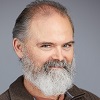There are three main branches of mammals alive today, classified mostly on their reproductive system:
- monotremes lay eggs,
- marsupials have pouches, and
- placental mammals keep the kids inside for longer.
Much of what it means to be human is shared with all mammals.
Note
Humans who can wiggle their ears share the same vestigial auricular muscles with other mamas.
Protomammals
Dinosaur-like mammals existed around hundreds of millions of years ago. They evolved into reptiles, mammals, dinosaurs, and birds.
Note
A new protomammal fossil.
Examples of living mammals
The split between the three groups of mammals living today happened while they were dodging huge dinosaurs in the Triassic period (250-200 mya). The three types of mammals:
Monotremes
The monotremes, or protheria, were once a large group of mammals that roamed the world, but today there are only two surviving species: the echidna and the duck-billed platypus. They lay eggs, have poison glands, and have other features we commonly consider reptilian.
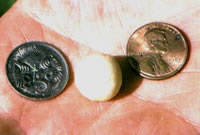
Figure \(\PageIndex{3}\) - Duck-billed platypus egg
Marsupials
Marsupials, also called metatheria, are animals where newborns must crawl to their mother's pouch to nurse until developed.
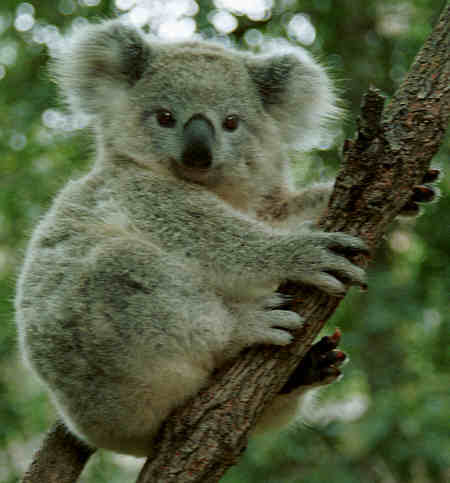
Figure \(\PageIndex{5}\) - Koala (Wikipedia)
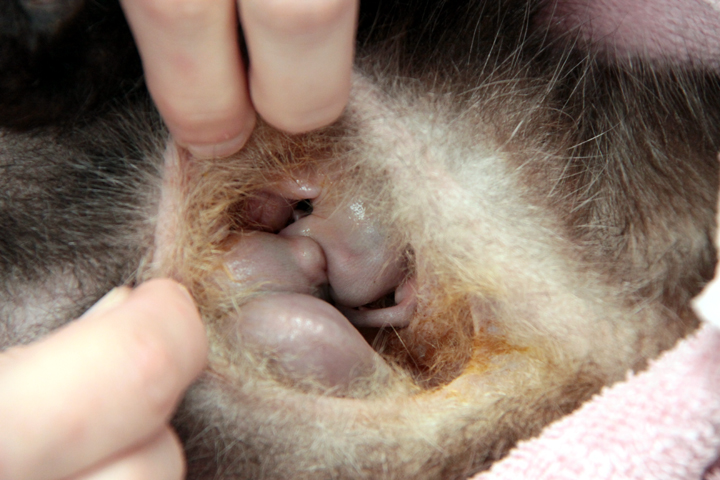
Figure \(\PageIndex{6}\) Possums
Placental Mammals
Placental mammals, also called eutheria, are known for carrying their fetuses inside a protective placenta until birth.
Imagination Questions
Does taxonomy make you feel more part of the animal kingdom? Try the exercises below to broaden your family tree.
1) How does the Linnaean taxonomy of humans compare to other life? For every branch in the Linnaean taxonomy of humans, find another species that fits into the categories above ours, but not those below it. For example, for "Order" you might pick cats, which have the same Kingdom, Phylum, Subphylum, Class, and Infraclass as us, but belong to a different Order.
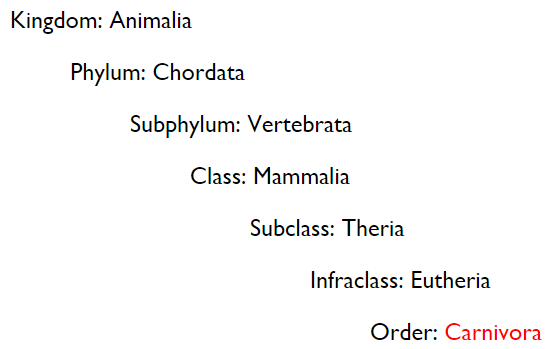
2) Take the first five to ten letters of your name and pick an animal that starts with each of those letters. Find the most recent common ancestor by looking up the origin of their common groups, and draw a taxonomy that connects all the animals and gives the dates when they split from each other. For example: Aardvark, Rhinoceros beetle, Newt, Ibis, Elephant. Insects first arose about 400 million years ago (mya), amphibians around 300 mya. Mammals split around 260 mya from the reptiles that became dinosaurs and then birds. The oldest fossil ancestors of Elephants and Aardvarks have been found only about 10 million years apart, about 60 mya and 50 mya, which is around when the first primate ancestors were found too, because of the adaptive radiation of mammals after 65mya. So Aardvarks and Elephants are my closest cousins, and Rhinoceros beetles probably don't get invited to many family functions.
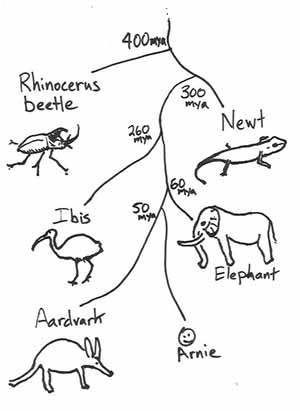
Figure \(\PageIndex{9}\)
3) Draw your family tree back to the Big Bang. Follow your maternal line back, skipping generations in powers of ten. Look up what ancestor was around at times below in the column "years ago" and briefly describe your sample "grandmothers".
I calculated the "years ago" column by multiplying the number of generations by the average generation length. I estimated the average time between generations by taking the average age of fertility, from menarche (first menstruation) to menopause (last menstruation)/death.
| Power of ten |
Generations |
Average age of menarche (First menstruation) |
Average reproductive lifespan or age of menopause |
Average generation length (years) |
Years ago |
Who was my Great, Great […] Grandma? |
Arnie's example: |
| 1 |
1 |
13 |
50 |
25 |
25 |
|
Mom |
| 2 |
10 |
17 |
40 |
20 |
200 |
|
great, great, great, great, great, great, great, great, great, great, grandmother, probably an Irish peasant |
| 3 |
100 |
? |
25 |
18 |
1800 |
|
great, [x100], great grandmother, possibly a Celtic peasant |
| 4 |
1,000 |
? |
? |
17 |
17,000 |
|
great, [x1000],great grandmother, an anatomically modern Homo sapiens hunter-gatherer possibly in the Iberian Peninsula with Maternal Haplogroup H3 (I happen to know this because I had my mitochondrial DNA tested)
See image below.
|
| 5 |
10,000 |
? |
? |
16 |
160,000 |
|
|
| 6 |
100,000 |
? |
? |
15 |
1,500,000 |
|
|
| 7 |
1,000,000 |
9 |
? |
12 |
12,000,000 |
|
|
| 8 |
10,000,000 |
N/A |
|
6 |
60,000,000 |
|
|
| 9 |
100,000,000 |
N/A |
|
4 |
400,000,000 |
|
|
| 10 |
1,000,000,000 |
N/A |
|
0.7 |
700,000,000 |
|
|
| 11 |
10,000,000,000 |
N/A |
|
0.1 |
1,000,000,000 |
|
|
| 12 |
100,000,000,000 |
N/A |
|
0.017 |
1,700,000,000 |
|
|
| 13 |
1,000,000,000,000 |
N/A |
|
0.002 |
2,000,000,000 |
|
great, […],great grandmother, an algae-like eukaryote |
| 14 |
10, 000,000,000,000 |
N/A |
|
0.00036 |
3,600,000,000 |
|
great, […],great grandmother, a cyanobacterium in a stromatolite |
| 15 |
100,000,000,000,000 |
N/A |
|
0.000044 |
4,400,000,000 |
|
great, […],great grandmother, a strand of self- replicating molecule swirling in primordial ooze |
| 16 |
etc. |
|
|
|
13,800,000,000 |
|
stardust |
Vocabulary
- allopatric
- ancestral
- convergent evolution
- derived
- divergent evolution
- homoplasy
- mammal
- marsupial
- monotremes
- parapatric
- peripatric
- placental
- primitive
- shared


